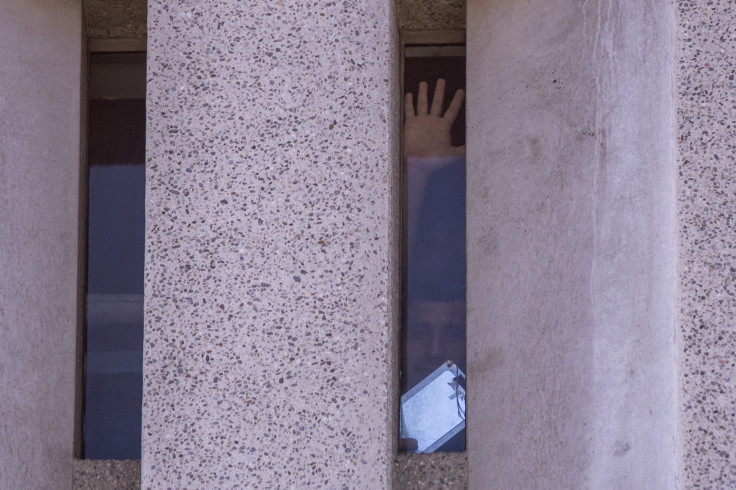
During her first White House briefing on January 27, the Trump administration's press secretary Karoline Leavitt was asked by a reporter how many of the 3,500 immigrants arrested since Trump took office have criminal record. Leavitt didn't hesitate in providing her answer: "all of them because they illegally broke our nation's laws."
Leavitt then added:
"I know the last administration didn't see it that way, so it's a big culture shift in our nation to view someone who breaks our immigration laws as a criminal, but that's exactly what they are"
As a recent piece by Axios pointed out, there is no law making it a crime to live in the U.S. as an undocumented immigrant. Instead, the law treats it as a civil violation. Nevertheless the merging of criminal and immigration law seems to be reshaping immigration enforcement in the U.S., subjecting noncitizens to severe penalties, including deportation, for offenses that might otherwise be considered minor.
In fact, there's a term for the blurred lines between immigration and criminal law: "crimmigration."
The Merging of Immigration and Criminal Law
Coined by legal scholar Juliet Stumpf in 2006, "crimmigration" describes the growing tendency to treat immigration violations as criminal offenses rather than civil infractions. This shift has led to stricter enforcement policies, increased deportations, and a redefinition of how the legal system views non-citizens.
Historically, immigration and criminal law operated as separate spheres. Immigration law governed who was permitted to enter or stay in the country, while criminal law applied to all individuals regardless of citizenship status. However, as Stumpf explained in a recent interview with the BBC, "the division between criminal law and immigration law has grown indistinct, such that the two are merely nominally separate."
Immigration Consequences of Criminal Convictions
Deportation is legally classified as an administrative action, not a criminal punishment, which means non-citizens facing removal lack many legal protections afforded to criminal defendants. They do not have a right to government-appointed counsel, cannot always challenge the evidence against them, and may be detained for long periods in prison-like conditions.
The U.S. Supreme Court has upheld that deportation is not a penalty, yet its effects can be as severe as criminal sentences. This legal framework has dramatically increased the number of people deported due to criminal activity, as legal scholar César Cuauhtémoc García Hernández points out in his often-cited 2017 article "What is Immigration Law?":
"For the 92 years from 1892 to 1984, only 14,287 people were excluded from the country because of criminal activity. During that same period, 56,669 were deported for that reason. In total, 70,956 people experienced some immigration con-sequence during this span because of criminal activity. By contrast, in 2013 alone, the Immigration and Customs Enforcement agency (ICE) reported removing 216,810 people with a criminal conviction on their record. Put another way, there were more than three times as many people removed from the United States due to criminal activity in 2013 alone than in most of the twentieth century combined"
Detention and Prosecution of Migrants
In the meantime, federal policies have also increased the use of detention for immigration-related offenses. Every year, roughly half a million people are held in immigration detention facilities, many of which resemble criminal incarceration.
"What underlies all of this is public sentiment—the perception of immigration as something linked to crime," explained Stumpf to the BBC. "And I believe that is perhaps one of the most important aspects of all this because if we largely view immigrants as people of color and associate immigration with crime, we create a mental connection that I consider to be truly harmful and dangerous."
As the U.S. increasingly criminalizes immigration violations, the demand for detention facilities has surged—leading to the proliferation of another player in the conversation: private prison companies. In early December, an in-depth piece by The Guardian revealed that president Joe Biden's administration negotiated at least 14 contracts for private immigration detention centers, despite widespread opposition from advocacy groups, congressional Democrats, and watchdog organizations.
"The Biden administration has increased the number of people in detention, doubled down on anti-immigrant, Trump-era deterrence policies, and expanded detention capacity in direct conflict with its own promises to end for-profit incarceration and bring fairness to the immigration system," said Silky Shah, executive director of Detention Watch Network to The Guardian at the time.
By the time Thomas Homan, Trump's border czar, had been appointed, shares of private prison stocks had soared, fueled by investor expectations of increased demand for detention services and stricter immigration enforcement under Trump's upcoming administrationThe Future of Crimmigration
Despite legal challenges and shifting political priorities, crimmigration policies remain deeply embedded in U.S. law and are currently at the heart of the discussion behind immigration policies pushed forward by the Trump administration.
"A huge issue right now is ICE's mandatory detention of unauthorized for mere allegations of criminal activity," explained immigration lawyer Ellen B. Sullivan to The Latin Times. "This is unnecessary because unauthorized people can already be detained by ICE and are detained by ICE when necessary for public safety. It is extremely disruptive to the states' ability to prosecute crimes, and presents a very slippery and inevitable slope down to detaining authorized or protected noncitizens for mere allegations of crime."
"Deportation is an administrative action, not a criminal punishment," concluded Stumpf during her interview with the BBC. "We tend to strongly associate handcuffs and shackles with criminal law and criminal punishment, and their use on deportation flights sends a powerful message that those being deported are dangerous and must be physically restrained. This is yet another example of how civil immigration law can be cloaked in the appearance of criminality."
© 2025 Latin Times. All rights reserved. Do not reproduce without permission.






